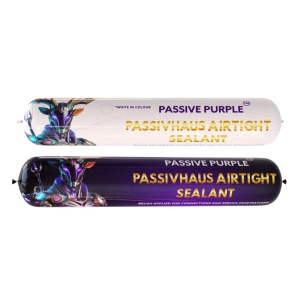12625
Why Breather Membranes Now Need to Be More Vapour-Closed
Written by
The construction industry has seen a shift towards more vapour-closed breather membranes, largely driven by advancements in condensation risk analysis and the push for more airtight, high-performance building envelopes. Here’s why:
Airtightness & Energy Efficiency Demands
As buildings become more airtight to meet stringent energy efficiency and Passivhaus standards, the way moisture moves through the structure has changed. In traditional, less airtight buildings, air leakage helped to dry out moisture trapped in the walls. However, in modern airtight construction, this natural drying effect is significantly reduced, meaning moisture must be carefully controlled.
A more vapour-closed breather membrane (with a higher SD value) ensures that:
✅ Moisture is retained in a controlled way, preventing excessive drying out of certain materials like timber, which can cause shrinkage or cracking.
✅ The external layer prevents inward vapour drive, reducing the risk of condensation forming within insulation layers.
✅ Thermal performance is optimised, as excessive moisture movement through insulation reduces its effectiveness.
Managing External Moisture & Wind-Driven Rain
Modern condensation risk assessments have shown that allowing too much vapour diffusion outward can be detrimental in certain conditions. A more vapour-closed breather membrane:
Limits the risk of external moisture penetrating inward (especially in extreme weather conditions).
Controls the drying rate of the structure, avoiding rapid evaporation that could lead to structural movement or degradation.
Prevents moisture accumulation within the wall build-up, which is critical for timber frame and hybrid constructions.
Preventing Reverse Condensation & Cold-Weather Risks
A highly vapour-open membrane can sometimes allow too much outward drying, which in cold conditions can lead to reverse condensation—where moisture condenses within the structure instead of safely escaping. A slightly more vapour-resistant external membrane helps:
Regulate vapour movement to prevent excessive drying out in winter.
Create a more controlled internal environment, maintaining stable humidity levels.
Enhance the durability of insulation materials, reducing the risk of moisture saturation.
Adaptation to Climate & Material-Specific Needs
Different materials react differently to moisture, and not all wall systems benefit from ultra-breathable membranes. Modern hygrothermal modelling (WUFI, BS 5250) allows for more precise specification of SD values based on climate, construction type, and insulation materials. More vapour-closed membranes are now favoured in colder climates or certain wall types where drying needs to be controlled rather than maximised.
The Bottom Line
The shift towards more vapour-closed breather membranes is about better moisture management, improved energy efficiency, and long-term durability. While older guidelines favoured ultra-breathable membranes (SD ~0.6m or lower), modern analysis has shown that a slightly higher SD value (more vapour resistance) can actually improve condensation control in many scenarios. This ensures buildings remain dry, stable, and high-performing for decades to come.
Vapour Control Products by Intelligent Membranes








Written by
Passive Purple Editions
-

Passivhaus Airtight Sealant – 600ml
Enquire Now Below From £12.00 + VAT Select options This product has multiple variants. The options may be chosen on the product page

